 |
A region where the ice is cracking and may produce an iceberg.
|
|
Warming ocean layers will undermine polar ice sheets
|
July 03, 2011 - Warming of the ocean's subsurface layers will melt underwater portions of the Greenland and Antarctic ice sheets faster than previously thought, according to new University of Arizona-led research.
Such melting would increase the sea level more than already projected.
The research, based on 19 state-of-the-art climate models, proposes a new mechanism by which global warming will accelerate the melting of the great ice sheets during this century and the next.
|
|
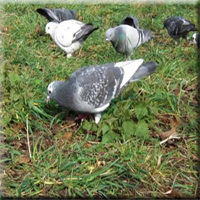 |
Untrained feral pigeons have special skills enabling them to recognize individuals, and are not fooled by people changing clothes.
|
|
Pigeons never forget a face
|
July 02, 2011 - New research has shown that feral, untrained pigeons can recognise individual people and are not fooled by a change of clothes.
Researchers, who will be presenting their work at the Society for Experimental Biology Annual Conference in Glasgow on Sunday the 3rd of July, have shown that urban pigeons that have never been caught or handled can recognise individuals, probably by using facial characteristics.
Although pigeons have shown remarkable feats of perception when given training in the lab this is the first research showing similar abilities in untrained feral pigeons.
|
|
|
| Crows never forget a human threat |
June 29, 2011 - Humans who dismiss birds as featherweights may revise their opinion when learning of crows that can not only identify the face of someone who is a danger but also teach others about the threat.
Intrigued by the behaviour of wild American crows (Corvus brachyrhynchos) on their campus in Seattle, University of Washington scientists explored whether the birds would recall a face associated with a frightening ordeal.
The researchers donned the rubber mask of a caveman before trapping, banding and releasing seven crows.
|
Read the full story, click Cosmos |
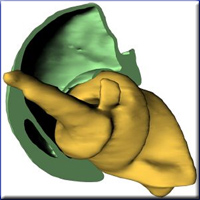 |
Both parts of the weevil’s hip joint fit like screw and nut. This increases the mobility of the leg. (Source: KIT)
|
|
Nature Uses Screws and Nuts
|
June 30, 2011 - A musculoskeletal system so far unknown in the animal world was recently discovered in weevils.
The hip of Trigonopterus oblongus does not consist of the usual hinges, but of joints based on a screw-and-nut system. This first biological screw thread is about half a millimeter in size and was studied in detail using synchrotron radiation.
“Such a construction for animal leg movement is quite unusual, as large areas of skeletal parts move on top of each other. Supply of the leg takes place via a very small opening in the center of the screw,” Thomas van de Kamp from Karlsruhe Institute of Technology says.
|
|
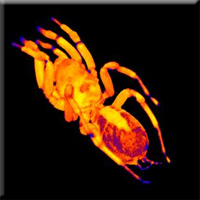 |
The heart is shown in lighter colors in the posterior part of the body. Credit: Gavin Merrifield.
|
|
Spider's double beating heart revealed by MRI
|
June 30, 2011 - Researchers have used a specialised Magnetic Resonance Imaging (MRI) scanner on tarantulas for the first time, giving unprecedented videos of a tarantula's heart beating.
"In the videos you can see the blood flowing through the heart and tantalisingly it looks as though there might be 'double beating' occurring, a distinct type of contraction which has never been considered before.
This shows the extra value of using a non-invasive technique like MRI," says PhD researcher Gavin Merrifield who is presenting the research at the Society for Experimental Biology Annual Conference in Glasgow on the 1st July 2011.
|
|
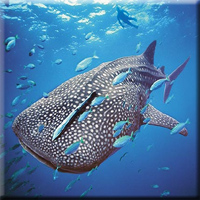 |
Weighing up to several tons, whale sharks are also notable for their markings. Each pattern of spots is unique and scientists identify individual fish using computer programs first developed to study star constellations. Credit: Brian Skerry ,The Smithsonian
|
|
Swimming With Whale Sharks
|
June 30, 2011 - At the moment, Rafael de la Parra has but one goal: to jump into water churning with whale sharks and, if he can get within a few feet of one, use a tool that looks rather like a spear to attach a plastic, numbered identification tag beside the animal’s dorsal fin. De la Parra is the research coordinator of Proyecto Dominó, a Mexican conservation group that works to protect whale sharks, nicknamed “dominoes” for the spots on their backs.
He slips off the fishing boat and into the water. I hurry in after him and watch him release a taut elastic band on the spear-like pole, which fires the tag into the shark’s body. De la Parra pops to the surface. “Macho!” he shouts, having seen the claspers that show it’s a male.
The biggest fish in the sea, a whale shark can weigh many tons and grow to more than 45 feet in length. Play Video
|
|
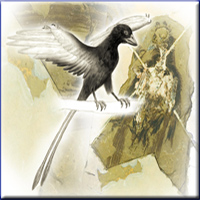 |
An artist’s conception of the pigmentation patterns in Confuciusornis sanctus
|
|
X-rays Reveal Patterns in the Plumage of the First Birds
|
June 30, 2011 - Scientists report today that they have taken a big step in determining what the first birds looked like more than 100 million years ago, when their relatives, the dinosaurs, still ruled the Earth.
At the Department of Energy’s SLAC National Accelerator Laboratory, they discovered chemical traces of a pigment, an important component of color, that once formed patterns in the feathers of the fossilized birds.
The pigment, eumelanin, is one of the coloring agents responsible for brown eyes and dark hair in many modern species, including humans.
|
|
 del.icio.us del.icio.us
|







